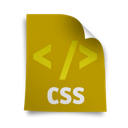 Resetting your CSS means removing all built-in browser styling, so that you can avoid cross-browser differences as much as possible. By resetting your CSS, you can create a consistent look across browsers. The downside is that you end up restyling elements that you reset earlier. Which means that you duplicate effort and increase the processing time of your website.
Resetting your CSS means removing all built-in browser styling, so that you can avoid cross-browser differences as much as possible. By resetting your CSS, you can create a consistent look across browsers. The downside is that you end up restyling elements that you reset earlier. Which means that you duplicate effort and increase the processing time of your website.
If you don’t want to duplicate your efforts, what can you do? You can normalize your CSS. Normalize preserves useful browser settings and provides cross-browser consistency. It gives you greater control because you can include sections that are specific to your website. You don’t have to clutter your style sheets with elements that you never use on your site. This helps to cut down on the amount of code in your style sheet.
Which CSS method should you choose?
Both reset and normalize are tools to help you style your website. For example, I first built a website using reset and then changed it to normalize. When I changed to normalize, I had to make a few minor adjustment to get the normalized CSS to match the reset CSS. These minor adjustments were needed to make the website look right. As with any tools, there are trade offs. You need to choose the tools that help you solve your problems.

 I found a simple and quick tutorial on building a
I found a simple and quick tutorial on building a 